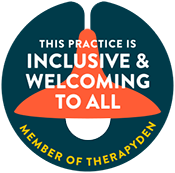Can EMDR Therapy Help with PTSD and Trauma?

By Brenda Stephens, LPCC
EMDR therapy offers a unique approach to treating PTSD and trauma by targeting the root causes of these conditions and providing a pathway to healing and recovery.
What is EMDR Therapy?
EMDR (Eye Movement Desensitization and Reprocessing) therapy is a scientifically validated psychotherapy approach specifically designed to help individuals process traumatic memories and experiences. Through a series of structured sessions, EMDR aims to alleviate the distress associated with traumatic memories by facilitating the brain’s natural healing mechanisms.
During EMDR therapy, a trained therapist guides the individual through sets of bilateral stimulation, which can involve side-to-side eye movements, sounds, or taps. This process helps the individual access and reprocess traumatic memories, ultimately leading to reduced emotional distress and the development of adaptive coping mechanisms.
EMDR therapy integrates elements of cognitive-behavioral therapy with bilateral stimulation to address the underlying negative beliefs and emotions associated with trauma. By engaging both the mind and body in the healing process, EMDR offers a comprehensive approach to healing from PTSD and trauma.
Through EMDR therapy, individuals can experience significant relief from symptoms of PTSD, anxiety, and other trauma-related conditions. By working through past traumatic experiences in a safe and supportive environment, clients can often achieve profound emotional healing and resolution.
The innovative nature of EMDR therapy lies in its ability to help individuals process traumatic memories without the need for extensive verbal processing. This makes it particularly beneficial for individuals who may struggle to articulate their traumatic experiences or emotions.
How Does EMDR Therapy Work for PTSD?
EMDR therapy works for PTSD by addressing the maladaptive ways in which traumatic memories are stored and processed in the brain. Through bilateral stimulation, EMDR helps desensitize the emotional charge of traumatic memories, allowing individuals to reprocess these memories in a more adaptive and less distressing way.
One of the key components of EMDR therapy is the reprocessing phase, where individuals are guided to explore and transform their negative beliefs about themselves that arose from the traumatic events. By integrating positive cognitions and emotions, EMDR helps individuals build a more resilient and empowered sense of self.
By engaging both the logical and emotional parts of the brain through bilateral stimulation, EMDR therapy promotes the integration of distressing memories into the individual’s overarching life narrative. This integration can lead to a reduction in PTSD symptoms, as well as an increased sense of safety and self-efficacy.
In addition to targeting specific traumatic memories, EMDR therapy also focuses on building essential coping skills and resources that individuals can utilize in managing triggers and distressing situations. This holistic approach equips clients with the tools they need to navigate the challenges of PTSD and trauma effectively.
Is EMDR Therapy Effective for Trauma?
EMDR therapy has been shown to be highly effective in treating trauma-related conditions, including PTSD, anxiety disorders, and depression. Research indicates that EMDR can produce rapid and lasting improvements in symptoms, even for individuals with complex trauma histories.
Numerous studies have demonstrated the efficacy of EMDR therapy in reducing the severity of PTSD symptoms, such as intrusive memories, hypervigilance, and emotional reactivity. By addressing the root causes of trauma and promoting adaptive processing, EMDR can lead to profound healing and recovery.
The structured and evidence-based nature of EMDR therapy makes it a valuable treatment option for individuals seeking to overcome the lingering effects of trauma. By providing a safe and supportive environment for processing traumatic memories, EMDR empowers individuals to reclaim their sense of agency and resilience.
What Are the Benefits of EMDR Therapy?
EMDR therapy offers a range of benefits for individuals struggling with PTSD and trauma, including accelerated healing, symptom relief, and improved emotional regulation. By targeting the core elements of trauma, EMDR can bring about transformative changes in how individuals process and respond to distressing memories.
One of the key benefits of EMDR therapy is its ability to help individuals access and reprocess traumatic memories without becoming overwhelmed or retraumatized. This gentle yet effective approach allows clients to work through difficult emotions at their own pace, promoting a sense of empowerment and agency in the healing process.
EMDR therapy also offers long-term benefits by addressing not just the symptoms of PTSD and trauma, but the underlying causes as well. By promoting neurobiological changes in how traumatic memories are stored and processed, EMDR facilitates lasting healing and a reduced risk of symptom relapse.
In addition to its efficacy in treating PTSD and trauma, EMDR therapy has been found to improve overall well-being, self-esteem, and interpersonal relationships. By resolving past traumas and fostering emotional resilience, individuals can experience a renewed sense of vitality and purpose in their lives.
Understanding the Process of EMDR Therapy
The process of EMDR therapy typically begins with an assessment phase, where the therapist gathers information about the client’s trauma history, symptoms, and treatment goals. This helps establish a foundation for the subsequent phases of treatment and ensures a personalized approach to healing.
Once the assessment is complete, the therapist guides the client through desensitization and reprocessing phases, where bilateral stimulation is used to target specific traumatic memories. This process helps the client access and reprocess the emotional components of the trauma, leading to symptom reduction and cognitive restructuring.
As the client progresses through EMDR therapy, they may experience shifts in their emotional responses, beliefs, and perceptions related to past traumatic events. These changes indicate the brain’s adaptive processing of the traumatic memories, paving the way for greater emotional resilience and well-being.
The final phases of EMDR therapy focus on integration and closure, where the therapist assists the client in consolidating their newfound insights and positive beliefs. By anchoring the client’s adaptive responses to the trauma, EMDR helps prevent symptom recurrence and promotes sustained healing and growth.
Overall, EMDR therapy offers a structured and effective approach to addressing the complex interplay of trauma, beliefs, emotions, and behaviors. By targeting the core elements of PTSD and trauma, EMDR empowers individuals to rewrite their narratives and step into a future free from the constraints of the past.
Discover the Healing Benefits of EMDR Therapy
Experience the transformative power of EMDR therapy in overcoming the challenges of PTSD and trauma. Take the first step towards a brighter future today.






